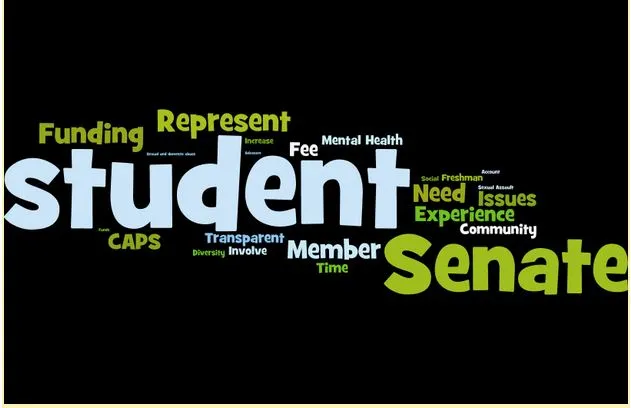Table of Contents
For the most part, the posters advertising undergraduate ASSU candidates are all the same: a smiling candidate in a self-confident pose standing in front of one of most picturesque spots on campus. The photos are often accompanied by a catchy slogan and/or a pun on the candidate’s name. These posters, though, are not the only example of striking similarities between Senate campaigns; candidates also use nearly identical language in their petition statements. Although the repetition of certain words and phrases can express unity — showing that candidates and students care about the same issues — it may also lead to semantic saturation that renders this rhetoric meaningless for the reader.
Semantic saturation, also known as verbal saturation, occurs when a listener unconsciously reduces certain words or phrases to meaningless sounds after hearing them over and over again. Anyone can experience this effect simply by repeating a certain word aloud (such as “Stanford, Stanford, Stanford, Stanford…”). This rapid and successive repetition causes reactive inhibitions, in which the ability to react to — or recognize — the word decreases with each exposure to the word.
Severance and Washburn first noted this psychological effect in 1908 and M.F. Bassett and C.J. Warne subsequently observed it in 1911, around the same time that the ASSU first formed over a hundred and ten years ago. During the current election for Senate seats, 42 candidates formed online petitions (though not all obtained the requisite number of signatures), and 35 submitted statements; their language was similar across the board.
Although candidates use these buzzwords to express their dedication to the problems the Senate must face, this repetition may have the opposite effect. When scrolling through candidate platforms, some of the words repeat so often that the meaning is lost by the last platform. As a result of semantic saturation, statements that potential senators worked hard to create and share have been repeated too often to resonate with readers. Instead, they are simply nonsensical and valueless words..
Stanford students often vote for their friends or for individuals whom their club(s) support; in these cases, the candidate’s language may not be relevant at all. Nevertheless, if Senate candidates want to stand out, they should try to resist the allure of buzzwords. Maybe, instead of focusing on their overall goals and relying on already overused words, candidates can add more substance to their platform — and to the elections — by listing the concrete steps they hope to take during their term. This approach is advantageous for both candidates and voters. Candidates who focus on their process will be able to stand out in a field of like-minded competition; these executable plans will allow candidates to establish their own personal approach to the ASSU. On the other hand, those who focus only on ideal goals seemingly have no choice but to rely on buzzwords. No matter how different those candidates are in reality, their language blends them together.
Candidates’ petitions are only one way in which potential future Senate members can display their ideas. Throughout their campaign, candidates also utilize speeches, posters, endorsements, and word-of-mouth support to bolster their chances. The statements they originally submit, however, introduce them to voters and should set the tone for the campaigning to come. If candidates rely too much on the same words, voters’ first impressions are not of accurate, engaging campaigns but instead of repetitive words, and, consequently, meaningless sounds.





